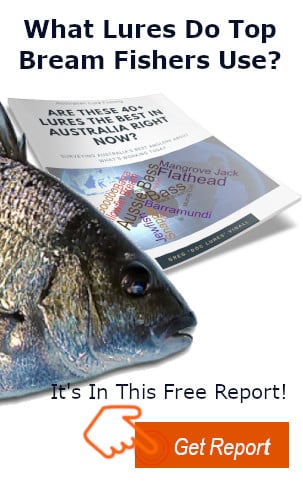
Alex Williams
SA Bream Fishing Personality
Alex is a passionate South Australian angler who’s on the board of directors for RecFish SA, is heavily involved with the Barossa chapter of Ozfish and is co-organiser of the Bream Masters tournament series. Kangaroo Island is one of his favourite places to chase the wiley black bream.
Alex’s Top Tips For Kangaroo Island Bream
- Kangaroo Island is an untouched, pristine location that requires a 45 min ferry fide from Cape Jervis. It’s a great tourist destination, not just for fishing, though the fishing is pretty good!
- Bream fishing in micro estuaries requires patience, persistence and composure. Shallow, clear water is not always the easiest place to catch fish and it’s common to give up or to start working lures too quickly.
- August to March is the prime time to target bream on Kangaroo Island. Because it’s a destination that you have to travel to, it’s best to allow enough time to explore a few estuaries in a single trip. Luckily you don’t need to travel too far to hop from one system to another – and the north coast of the island is particularly good for this.
- Talk to the locals to get some tips on where to access the estuaries. Some of the estuaries are accessible to kayak fishers and others you’ll need to walk some distance to access them.
- If it’s a bright, sunny day, look for areas where there are patches of shade. Much of the fishing is visual which means the fish can see you too. Bream often hold in the shade of a tree and can be tempted by moving quietly and casting long to reach fish without spooking them. Enough breeze to just ripple the surface can also help.
- Many of the estuaries on Kangaroo Island are landlocked for much of the year, so tides are too much of a factor. Early mornings and late afternoons typically fish well, but bream can turn up at any time of the day.
- You’ll often be fishing in water from 300-500mm deep with patches of weed. Be sure to cast at any structure you see, whether it’s a piece of timber, submerged shrub, rock or the edge of a substrate change..
Alex’s Recommended Bream Fishing Tackle
- A 1-4kg, 7’ spin rod coupled with a 2000 to 2500 size reel 4-6lb braided line and 4lb fluorocarbon leader is a good setup for KI micro estuaries.
Alex’s Lures For Bream Fishing
- The Z-Man 2.5” grub in motor oil colour on a 1/20oz TT headlocks jighead is a very versatile lure that works a treat on bream all over Australia and KI is no exception. This still of jig head allows the lure to be worked very slowly. If bream are visible Alex will sight cast to them, otherwise he’ll cast as close to any structure he can see as possible, allow the lure to sink to the bottom, giving it a 5 to 30 second pause varying the pause length. To work the lure, lift the rod so the lure just moves a little off the bottom, then allow the lure to sink back, keeping in touch with it. Other times it can be productive to simply slow roll the lure with the occasional pause – bream will often take the lure from the bottom during the pause. A little bit of fish attractant can help get the bite.
- The shallow running Pro Lure S36 Crankbait in Motor Oil Shrimp is an effective lure in shallow, clear water when cast parallel to the backs and close to structure such as logs. The “twitch, twitch, pause” technique works, mixing up the number of twitches between pauses. Keep it tight to structure.
- 50mm, 3.9g Cranka Crabs are a great lure for black bream fishing, especially in sand crab and brown crab colours. They can be fished in shallow or deep water, but on Kangaroo Island seem to work especially well in deeper water on overcast days. It’s critical that they’re fished extremely slowly, even dead-sticked. Casting them tight to structure and letting them sink to the bottom is effective also. If they’re not eaten on the drop then leave them still for 30 seconds before shaking the rod tip to impart the subtlest of actions. The idea is to just make the floating claws wave about like a crab in the defensive position, without the lure moving along the bottom too much.



0 Comments